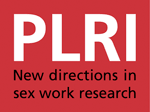trafficking
Sherief Gaber offers a fascinating and thorough analysis of anti-trafficking rhetoric and the ideology and actions it drives. In an article in the Huffington Post US academic Ronald Weitzer provides a clear explanation of why the claims being made about sex trafficking by celebrities, charities, UN and government agencies should not be taken at face value. One of the very few articles that relates sex work and income generation. Drawing on very little evidence it suggests that microfinance can contribute towards addressing the problems of human trafficking through “(i) Income generation and job creation; (ii) Education; (iii) Vocational skills training; (iv) Family

